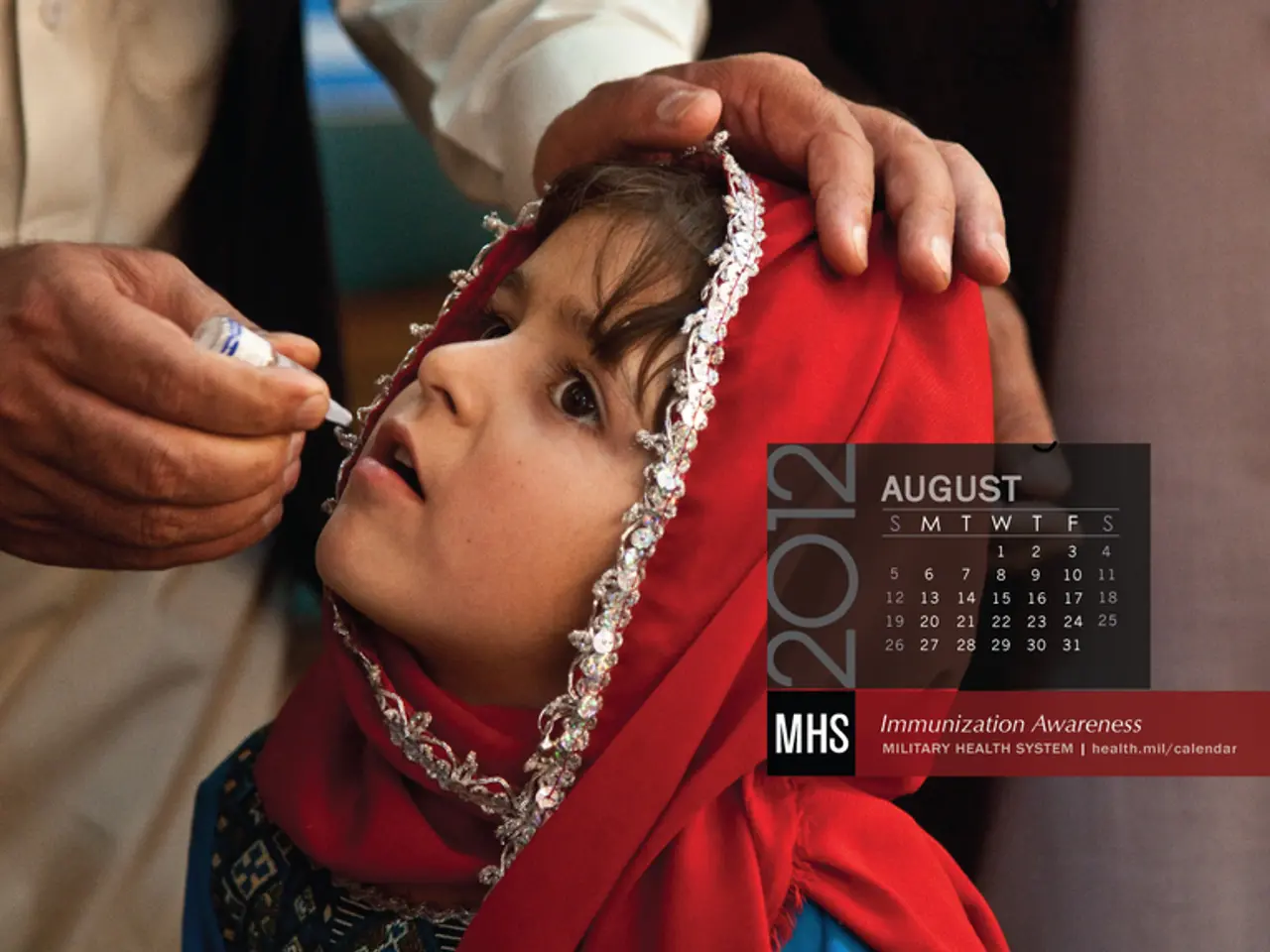States Exhibit Variations in Kindergarten Vaccination Coverage Rates
Vaccination Coverage Declines Among U.S. Kindergarteners
A recent report from the Centers for Disease Control and Prevention (CDC) has revealed a concerning decline in vaccination coverage among kindergarteners in the United States. The decline, which is most pronounced for the measles-mumps-rubella (MMR) vaccine, has been driven primarily by a rise in vaccine exemptions, especially nonmedical exemptions.
According to the CDC, states have the power to mandate vaccines, even if they are licensed by the FDA and recommended by the CDC. However, the rise in exemptions has led to a significant decrease in vaccination coverage. In the 2024-25 school year, only about 92.5% of kindergartners received the required MMR vaccine, down from a pre-pandemic rate of 95%.
One key factor contributing to this decline is the misinformation and skepticism linked to COVID-19 vaccine debates. Online misinformation, politicization, and heightened vaccine hesitancy during the pandemic have caused more parents to question the safety and necessity of routine childhood vaccinations.
Another factor is the rise in nonmedical exemptions. Many states have seen an increase in parents using personal belief exemptions rather than medical exemptions, undermining vaccination coverage. Some states report very high exemption rates, such as Idaho at 15.4%, whereas others like Connecticut have exemption rates below 0.5%.
The ongoing measles outbreaks in the U.S. are another factor contributing to the decline in vaccination coverage. The U.S. is experiencing its worst measles resurgence in over 30 years, with more than 1,300 cases reported. This resurgence is partly due to reduced herd immunity from lower vaccination coverage.
The CDC closely monitors these trends and emphasizes the importance of maintaining high vaccination coverage to prevent disease outbreaks. The recent decline represents a rollback to pre-pandemic vaccination vulnerabilities exacerbated by social and political factors affecting parental vaccine decisions.
The DTP/DTaP/DT vaccine, which protects against diphtheria, a dangerous bacterial infection, and the polio vaccine, which protects against the infection that can cause paralysis in severe cases, also saw a decline in coverage. For the hepatitis B vaccine, which protects against liver infection, coverage remained relatively stable.
The CDC recently released data on vaccination coverage among kindergartners for four vaccines: DTP/DTaP/DT, hepatitis B, MMR, and polio. The states with the highest rates of MMR vaccine coverage were Mississippi, New York, California, Connecticut, Maine, Massachusetts, and Rhode Island. Florida, Idaho, Utah, Colorado, Minnesota, and Wisconsin had some of the lowest rates of vaccination for all four vaccines.
Dr. Paul Offit believes that the pushback against vaccines is understandable, given the number of vaccines children receive and the complexity of the vaccines. However, he emphasizes the importance of maintaining high vaccination coverage to protect public health.
The global context of barriers also contributes to protection gaps that can affect U.S. efforts indirectly. Although more global children are vaccinated than ever, challenges like misinformation, access issues, and instability continue to pose obstacles.
The CDC encourages parents to speak with their healthcare providers about the importance of vaccinations and to ensure that their children are up-to-date on their vaccinations. Maintaining high vaccination coverage is crucial to preventing disease outbreaks and protecting public health.
**References**
[1] Centers for Disease Control and Prevention. (2025). Vaccine coverage among kindergartners—United States, 2024-25 school year. MMWR Morb Mortal Wkly Rep, 74(31), 889-893.
[3] Centers for Disease Control and Prevention. (2024). Measles: Case counts and outbreaks—United States, 2024. MMWR Morb Mortal Wkly Rep, 73(41), 1231-1235.
[4] World Health Organization. (2024). Immunization, vaccines and biologicals: WHO position paper on the ethics of vaccine hesitancy. WHO Technical Report Series, 1005(1), 1-34.
[5] National Conference of State Legislatures. (2024). Vaccine requirements for school attendance. Retrieved from https://www.ncsl.org/research/health/vaccine-requirements-for-school-attendance.aspx
- The decline in vaccination coverage among U.S. kindergarteners, as reported by the Centers for Disease Control and Prevention (CDC), poses a significant risk to health-and-wellness, particularly in preventing disease outbreaks.
- In the realm of education-and-self-development, understanding the science behind vaccines and their necessity is crucial for making informed decisions about personal health and public health.
- To combat the decline in vaccination coverage and maintain high vaccination rates, the CDC emphasizes the importance of lifelong learning about the benefits of vaccines and open communication with healthcare providers for children's health and wellness.




